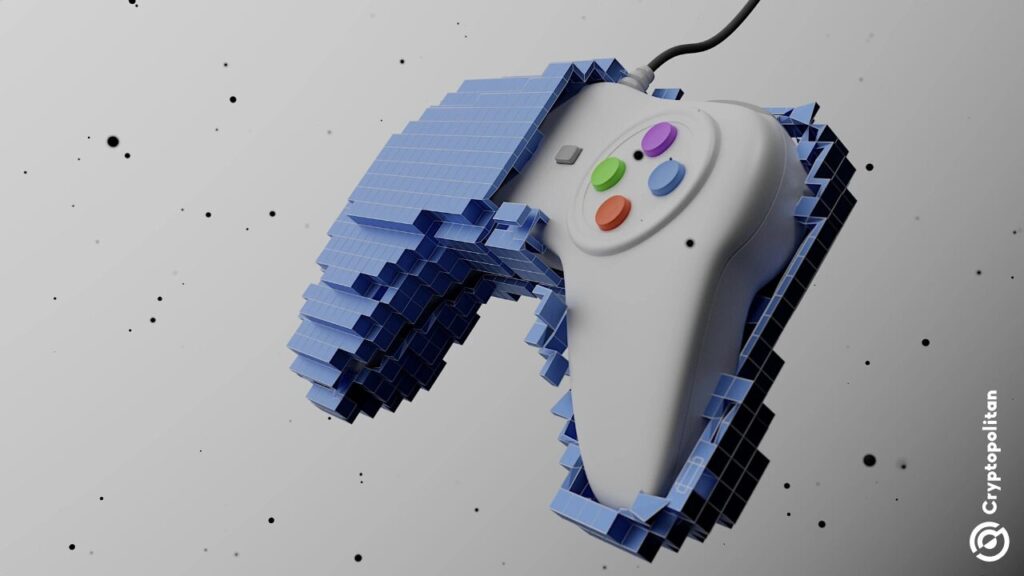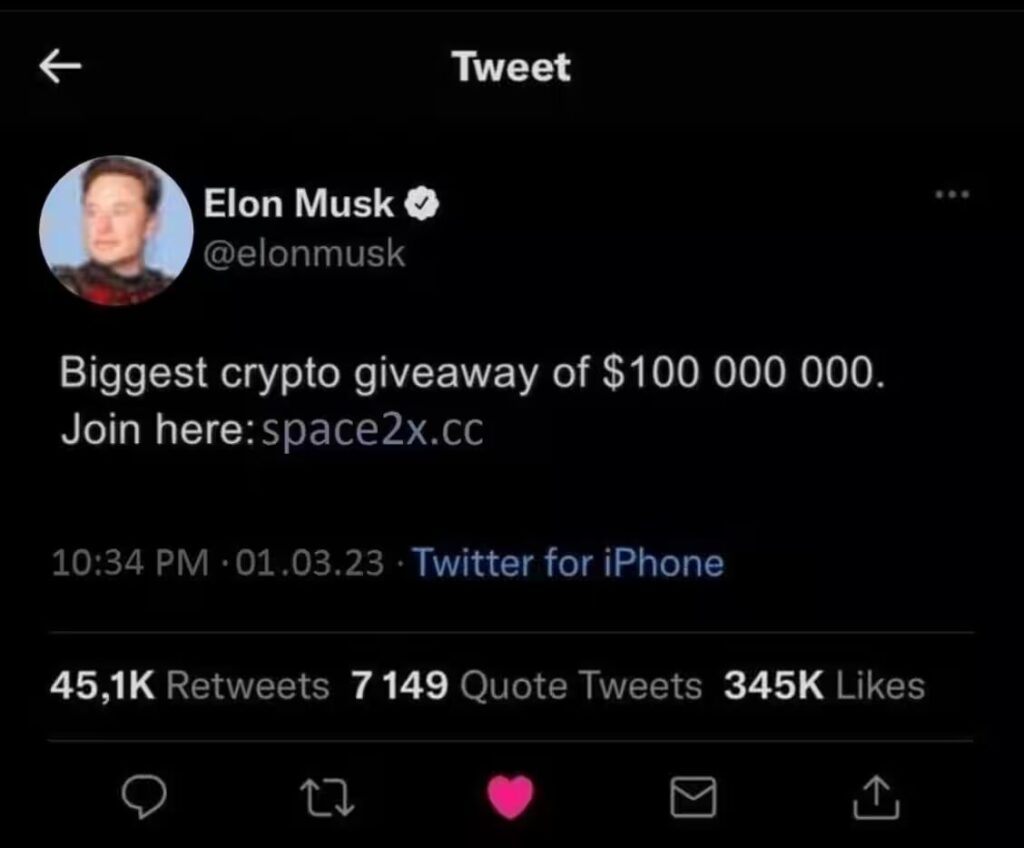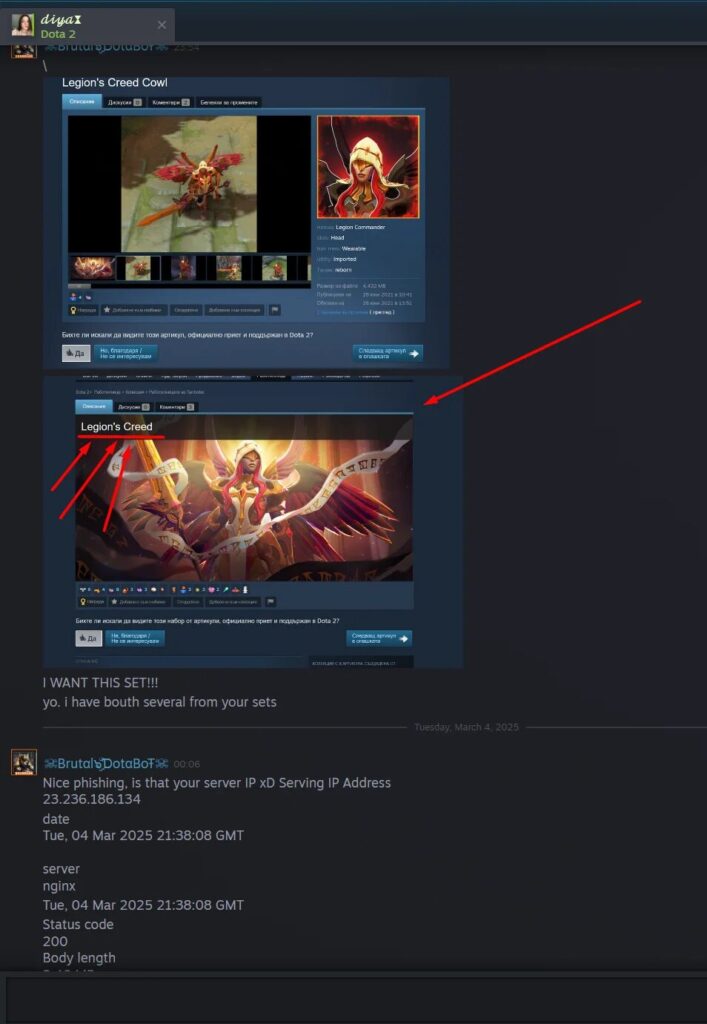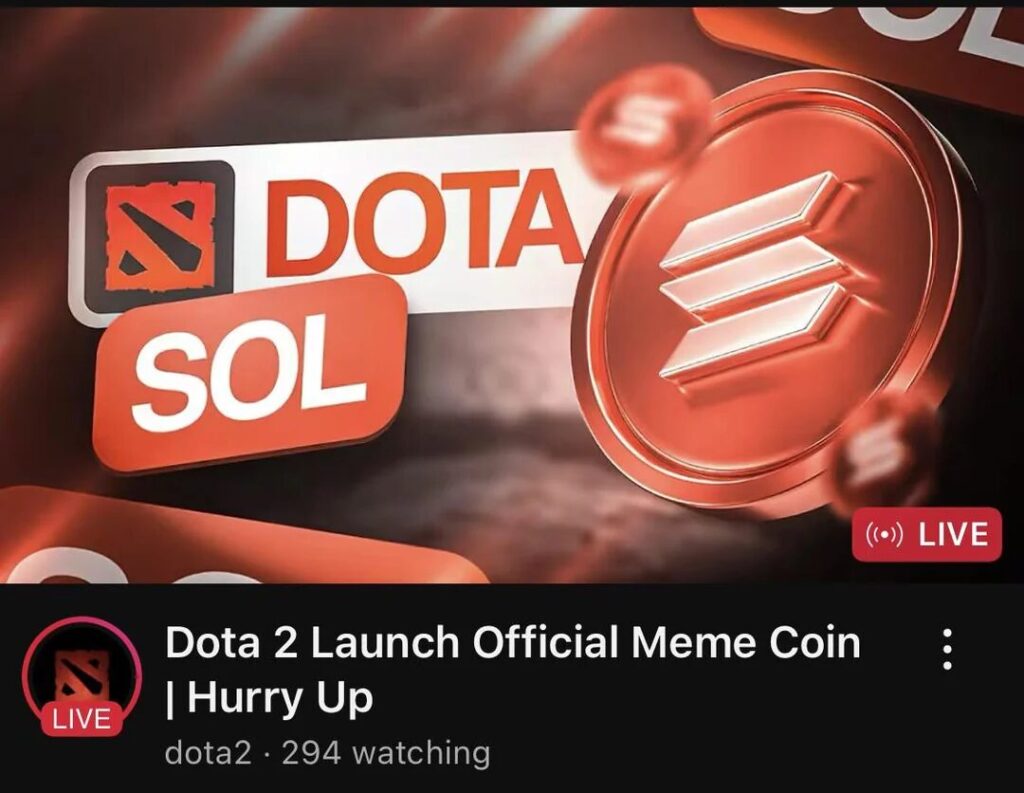The Dota 2 YouTube hack surprised fans around the world when two major esports channels, Dota 2 and PGL, were hijacked on October 15, 2025.
Instead of game highlights or tournament news, viewers saw a livestream called “Dota 2 Launch Official Meme Coin | Hurry Up.”
At first glance, everything looked official. The stream used real Dota 2 visuals, event-style music, and even an announcer’s voice. But inside the description was a Pump.fun link promoting a new crypto token named dota2coin. The link directed users to a Solana-based meme coin that promised huge returns for early buyers.
Soon, confusion spread across Reddit and X (formerly Twitter). Esports fans realized the livestream was a scam. To make things worse, similar fake broadcasts appeared on ESL, BLAST Counter-Strike, and Mobile Legends MPL Indonesia YouTube channels.
The attack didn’t just target one brand—it hit several of the most trusted names in competitive gaming.
How the Crypto Scam Spread So Quickly – Dota 2 YouTube hack

The incident unfolded over a few hours, but it spread faster than most fans expected. At 10:45 PM (GMT+8), the Dota 2 YouTube channel went live with the fake event. Less than an hour later, PGL’s channel started streaming the exact same video.
When viewers clicked the link in the video description, they were taken to Pump.fun, where dota2coin had been created only hours earlier. The coin’s price spiked as curious users tried to buy in, but it crashed within minutes as the creators sold off their tokens.
The Rapid Timeline of the Attack
| Time (GMT+8) | Key Event |
|---|---|
| 10:45 PM | Dota 2 YouTube goes live with fake coin stream |
| 11:30 PM | PGL YouTube also hijacked |
| 12:10 AM | Community posts warnings on Reddit and X |
| 2:00 AM | YouTube removes fake livestreams |
| 8:00 AM | Channels fully restored |
Because of the quick community response, the scam didn’t cause large financial losses. Still, it revealed how easily cybercriminals could use trusted esports channels to push crypto schemes.
What Made the Scam Look So Convincing – Dota 2 YouTube Hack

The scammers designed the livestream to feel like a legitimate esports event. From countdown graphics to announcer-style voiceovers, everything mimicked Valve’s usual presentation style. Even the thumbnail and title used familiar color palettes to build trust.
The dota2coin itself was typical of a pump-and-dump token. Blockchain data later confirmed that one wallet controlled nearly 98% of all tokens. Once enough people bought in, the attackers sold their holdings, causing the coin’s value to collapse instantly.
To draw in more victims, the hackers used classic psychological tactics:
- Authority: Using Valve’s name and logos made viewers trust the stream.
- Urgency: Countdown timers and “limited offer” pop-ups pushed people to act fast.
- Repetition: The same scam running on multiple esports channels made it seem legitimate.
These tactics have appeared in similar scams before—such as fake Elon Musk crypto giveaways and fraudulent NFT launches that have hijacked YouTube channels since 2020.
How Hackers Took Control of Esports Channels – Dota 2 YouTube Hack

Cybersecurity researchers now believe the attackers gained access through phishing emails. These emails likely pretended to be from sponsors offering collaboration deals or tournament partnerships.
Once a team member clicked the fake link, hackers captured their session tokens, which let them log into YouTube without passing two-factor authentication. This method, known as session hijacking, bypasses standard security features.
Evidence of a Coordinated Operation
Several clues point to a professional hacking group rather than individual scammers:
- Multiple esports channels were breached within minutes.
- Each stream used identical metadata and file names.
- Blockchain activity showed synchronized wallet withdrawals.
Some experts also noted that a YouTube playback outage occurred the same night, suggesting a possible connection or exploit. While YouTube hasn’t confirmed this link, the timing raised eyebrows among analysts.
The attack demonstrated how esports brands—with large audiences and strong fan trust—have become valuable tools for crypto scammers.
The Fast Community Response and Expert Reactions

When the livestreams appeared, fans reacted immediately. Within an hour, community moderators on r/DotA2 pinned warning posts. Influencers like Brad Lynch and several esports journalists used X to alert followers and tag YouTube support.
Their quick action helped minimize the scam’s reach. Still, the silence from Valve and PGL frustrated fans. Many expected statements or reassurances, but none came. The lack of communication left players and viewers wondering how secure other official channels were.
What Analysts and Experts Are Saying
Cybersecurity and industry experts have weighed in since:
- Cyber analysts warned that YouTube hijackings tied to crypto scams have been increasing since 2020.
- Solana educators reminded users that while platforms like Pump.fun are legal, scammers often misuse them.
- Gaming security advocates urged organizations to add hardware-based authentication and constant security audits.
Across social media, one phrase kept resurfacing: “Verify before you vibe.” It became the community’s quick reminder to double-check before trusting any “official” stream.
Lessons and the Future of Esports Security

The Dota 2 YouTube hack didn’t just highlight a vulnerability—it revealed a major shift in how online trust is built and broken. When verified esports channels can be hijacked overnight, audiences start doubting even real broadcasts.
For YouTube, the hack shows the need for faster real-time threat detection. For esports organizations, it’s a wake-up call to invest in better cybersecurity practices, from employee training to limited admin access.
Fans, too, play a role. They can protect themselves by:
- Checking links directly from official websites, not video descriptions.
- Avoiding wallet connections during live events.
- Reporting suspicious content immediately.
As esports grows closer to the crypto world, scams like this will likely appear again. The key to fighting them is stronger awareness, smarter platforms, and transparent communication from brands.
Closing Thought:
The Dota 2 YouTube hack proved that even trusted esports names aren’t untouchable. As gaming and crypto continue to mix, protecting trust online might become the community’s biggest match yet.itles.




